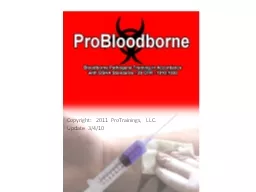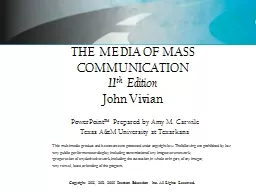PPT-Copyright: 2011 ProTrainings
Author : ellena-manuel | Published Date : 2018-11-06
LLC Update 3410 Course Objectives General explanation of the epidemiology and symptoms of bloodborne diseases An explanation of the modes of transmission of
Presentation Embed Code
Download Presentation
Download Presentation The PPT/PDF document "Copyright: 2011 ProTrainings" is the property of its rightful owner. Permission is granted to download and print the materials on this website for personal, non-commercial use only, and to display it on your personal computer provided you do not modify the materials and that you retain all copyright notices contained in the materials. By downloading content from our website, you accept the terms of this agreement.
Copyright: 2011 ProTrainings: Transcript
Download Rules Of Document
"Copyright: 2011 ProTrainings"The content belongs to its owner. You may download and print it for personal use, without modification, and keep all copyright notices. By downloading, you agree to these terms.
Related Documents














